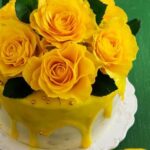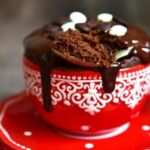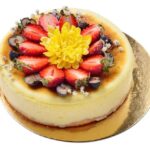Butter icing is a versatile and delicious frosting that can take your cakes to the next level. In this article, we will explore how to decorate cakes with butter icing, covering everything from essential tools and ingredients to different techniques for creating stunning designs. Whether you are a baking enthusiast or a beginner looking to enhance your cake decorating skills, mastering butter icing can truly elevate your creations.
Butter icing, also known as buttercream, is a classic frosting made from butter, sugar, and flavorings. There are several types of butter icing, including American buttercream, Swiss meringue buttercream, and Italian meringue buttercream. Each type has its own unique texture and flavor profile, allowing for endless creative possibilities when it comes to decorating cakes. With the right tools and ingredients at your disposal, you can easily whip up a batch of delicious butter icing to adorn your cakes.
Before diving into the world of butter icing decoration, it is essential to have the necessary tools and ingredients on hand. From piping bags and tips to food coloring gels and flavor extracts, having these items at your disposal will make the decorating process much smoother.
Additionally, preparing the cake itself is an important step in ensuring that your decorations shine. By following our tips on baking and preparing the cake properly, you will set yourself up for success when it comes time to decorate with butter icing.
Essential Tools and Ingredients
When it comes to decorating cakes with butter icing, having the right tools and ingredients is essential in achieving a beautiful and delicious end result. Some of the essential tools you will need include a cake turntable for easy decorating, offset spatulas for smooth icing, piping bags and tips for intricate designs, and a bench scraper for clean edges. Additionally, having a good quality mixer to whip up the butter icing is crucial for achieving the perfect consistency.
As for ingredients, the key component of butter icing is, of course, butter. Make sure to use unsalted butter that is at room temperature for best results. You will also need powdered sugar, vanilla extract or other flavorings if desired, and a pinch of salt to balance out the sweetness. For adding color to your butter icing, gel food coloring works best as it won’t alter the consistency of the icing like liquid food coloring can.
Before you begin decorating your cake with butter icing, make sure you have all your tools and ingredients prepped and ready to go. This will save you time and make the decorating process much smoother. With the right tools and ingredients at hand, you’ll be well on your way to creating stunning cakes that not only look amazing but taste delicious too.
Preparing the Cake
Baking a cake is the foundation of the decorating process, and it’s important to get it right to ensure a beautiful final product. To start, make sure you have the correct size and shape of pans for your cake recipe. It’s crucial to properly grease and flour the pans before pouring in the batter to prevent sticking. Additionally, lining the bottom of the pan with parchment paper can make it easier to remove the cake after baking.
When preparing your cake batter, be sure to follow the recipe instructions carefully. This includes using ingredients at the correct temperature and mixing them together thoroughly. Overmixing can result in a tough cake, so mix until just combined. Once your batter is ready, pour it into the prepared pans and smooth out the tops for even baking.
Properly baking your cakes is key to a successful decorating experience. Make sure your oven is preheated to the correct temperature before placing the pans inside. Avoid opening the oven door frequently while baking as this can cause uneven rising. To test if your cakes are done, insert a toothpick into the center – if it comes out clean, they are ready to be removed from the oven and cooled before decorating.
| Tips for Preparing Cake | Importance |
|---|---|
| Properly grease and flour pans | Prevents sticking and ensures easy removal |
| Follow recipe instructions carefully | Results in a well-mixed batter for proper rising |
| Avoid overmixing | Prevents a tough texture in baked cakes |
Making Butter Icing
Butter icing, also known as buttercream frosting, is a versatile and delicious way to decorate cakes. It is made by combining butter, powdered sugar, and flavorings to create a smooth and creamy finish. There are different types of butter icing, including American buttercream, Swiss meringue buttercream, and Italian meringue buttercream, each with its own unique characteristics.
To make the perfect butter icing for decorating cakes, you will need the following tools and ingredients:
- Unsalted butter – at room temperature
- Powdered sugar (also known as confectioners’ sugar)
- Vanilla extract or other flavorings
- Milk or heavy cream (optional)
- Mixer (stand mixer or hand mixer)
- Spatula
Now that you have gathered all the necessary tools and ingredients, it’s time to start making the butter icing. Follow these simple steps for a delicious and creamy frosting:
- Start by beating the softened butter in a mixing bowl until it becomes light and fluffy.
- Add the powdered sugar slowly to avoid any lumps in the icing. Mix on low speed until incorporated.
- Once the sugar is mixed in, add vanilla extract or other flavorings of your choice. If the consistency is too thick, you can add milk or cream a little at a time until you reach your desired texture.
By following this step-by-step guide on how to make the perfect butter icing, you’ll be ready to decorate your cake beautifully in no time. Experiment with different flavors and colors to create stunning designs that will impress your family and friends at any special occasion.
Different Techniques for Decorating
Decorating cakes with butter icing can be a fun and creative process, allowing you to customize your baked creations in countless ways. There are various techniques you can use to achieve different decorative effects on your cakes. Here are some popular methods for decorating cakes with butter icing:
- Piping: Piping is a technique that involves using a piping bag and different nozzles to create intricate designs, borders, and patterns on the cake. You can pipe butter icing flowers, swirls, lettering, or even intricate lace-like designs on your cake.
- Spreading: Spreading butter icing is one of the most common techniques for decorating cakes. Simply use an offset spatula or a butter knife to spread a smooth layer of icing over the cake’s surface. You can create a clean and simple finish or add texture by swirling the icing.
- Using Different Nozzles: One way to add variety to your cake decorations is by using different types of nozzles with your piping bag. Large round nozzles can create bold lines or fill large areas quickly, while smaller star-shaped nozzles can add delicate details like rosettes or shells.
Each of these techniques offers a unique way to decorate cakes with butter icing and allows you to unleash your creativity in the kitchen. Experiment with different tools and methods to find what works best for you and creates the perfect design for your cake.
Remember that practice makes perfect when it comes to mastering these techniques. Don’t be discouraged if your first attempts aren’t flawless – with time and patience, you’ll improve your skills and become more confident in how to decorate cakes with butter icing. Start by practicing basic piping and spreading techniques, then move on to more advanced designs as you gain experience and skill in cake decorating.
Color and Flavor Options
Coloring Butter Icing
Adding color to butter icing can take your cake decorating to the next level. There are a few different options for coloring butter icing, including using gel food coloring, liquid food coloring, or natural food dyes. Gel food coloring is preferred by many bakers as it provides vibrant colors without altering the consistency of the icing.
Start by adding a small amount of gel food coloring and gradually increase until you achieve the desired shade. Remember that the color may darken over time, so it’s best to let the icing sit for a few minutes before using.
Flavoring Butter Icing
Aside from adding color, you can also experiment with different flavors to enhance your butter icing. Some popular flavor options include vanilla extract, almond extract, citrus zest, or even coffee or chocolate flavorings for a unique twist. When adding flavorings to your butter icing, start with a small amount and adjust to taste.
Remember that certain extracts are more potent than others, so a little can go a long way. Be sure to mix thoroughly to evenly distribute the flavor throughout the icing.
Creative Combinations
For truly unique cakes, consider combining different colors and flavors in your butter icing. Create ombre effects by tinting different batches of icing in varying shades of the same color or try marbling two complementary colors together for a beautiful swirl effect.
You can also pipe contrasting colors side by side for a fun and colorful design or layer different flavors between cake layers for a surprising burst of taste with each bite. The possibilities are endless when it comes to decorating cakes with butter icing, so don’t be afraid to get creative and experiment with different color and flavor combinations.
Troubleshooting Tips
Butter Icing Too Runny or Soft
One common issue that bakers face while decorating cakes with butter icing is when the icing turns out too runny or soft. This can make it difficult to create intricate designs or piped decorations on the cake. The most common reason for this is that the butter was too soft when making the icing.
To fix this issue, simply refrigerate the icing for about 15-20 minutes to allow it to firm up slightly. You can also add more powdered sugar gradually until you reach the desired consistency.
Crumbs Getting Into the Icing
Another common problem while decorating cakes with butter icing is when crumbs from the cake get mixed into the icing, creating a messy and unappealing finish. To prevent this, make sure to apply a crumb coat of thin butter icing before adding a final layer of icing.
This will help seal in any loose crumbs and create a smooth base for decorating. Alternatively, you can chill the cake in the refrigerator after applying the crumb coat to help set the icing and minimize crumbs getting into it.
Icing Not Holding Its Shape
Sometimes, decorators may find that their piped decorations or designs do not hold their shape and start to melt or sag. This could be due to warm temperatures in the kitchen or holding onto the piping bag for too long, causing the heat from your hands to soften the butter in the icing.
To tackle this issue, try placing your piping bag in the refrigerator for a few minutes between piping different elements on your cake. Additionally, if you are working in a warm environment, consider using shortening instead of butter in your icing recipe as it holds up better in higher temperatures.
Advanced Decorating Tips
In conclusion, mastering the art of decorating cakes with butter icing opens up a world of creativity and endless possibilities. From simple designs to intricate masterpieces, the key lies in understanding the basics and experimenting with different techniques. By following the essential tools and ingredients list, preparing the cake properly, making the perfect butter icing, and exploring various decorating techniques, anyone can elevate their cakes to a whole new level.
For those looking to take their cake decorating skills to the next level, advanced tips and tricks offer a wealth of opportunities. Creating intricate designs and textures with butter icing requires patience, practice, and a willingness to try new things. Whether it’s using different piping nozzles for unique patterns or incorporating multiple colors for a stunning visual impact, there are countless ways to make your cakes stand out from the crowd.
So why not pick up your tools, gather your ingredients, and start experimenting with how to decorate cakes with butter icing? With dedication and a passion for creating beautiful desserts, anyone can become a skilled cake decorator. Remember to embrace the creative process, learn from any mistakes along the way, and most importantly, have fun exploring the endless possibilities that butter icing has to offer. Your next masterpiece could be just a piping bag away.
Frequently Asked Questions
How Do I Decorate My Cake With Butter Icing?
Decorating a cake with butter icing involves using a piping bag fitted with a decorative tip to create various designs on the surface of the cake. You can pipe swirls, rosettes, stars, or any other design you desire. It’s important to practice your technique beforehand to ensure smooth and consistent icing application.
How Do You Top a Cake With Buttercream?
Topping a cake with buttercream can be done by spreading or piping a layer of buttercream onto the top of the cake. This can be done in a simple and rustic manner for a homemade look or in a more elaborate and detailed way for special occasions. Use an offset spatula or piping bag to achieve the desired effect.
How Do You Coat a Cake With Buttercream?
Coating a cake with buttercream involves applying a crumb coat first to seal in any loose crumbs, then adding a final coat of buttercream for an even finish. Start by placing a dollop of frosting on top of the cake and spreading it evenly over the top and sides using an offset spatula.
Smooth out any imperfections before adding additional decorations if desired.

Welcome to my blog about home and family. This blog is a place where I will share my thoughts, ideas, and experiences related to these important topics. I am a stay-at-home mom with two young children. I hope you enjoy reading it! and may find some helpful tips and ideas that will make your home and family life even better!





